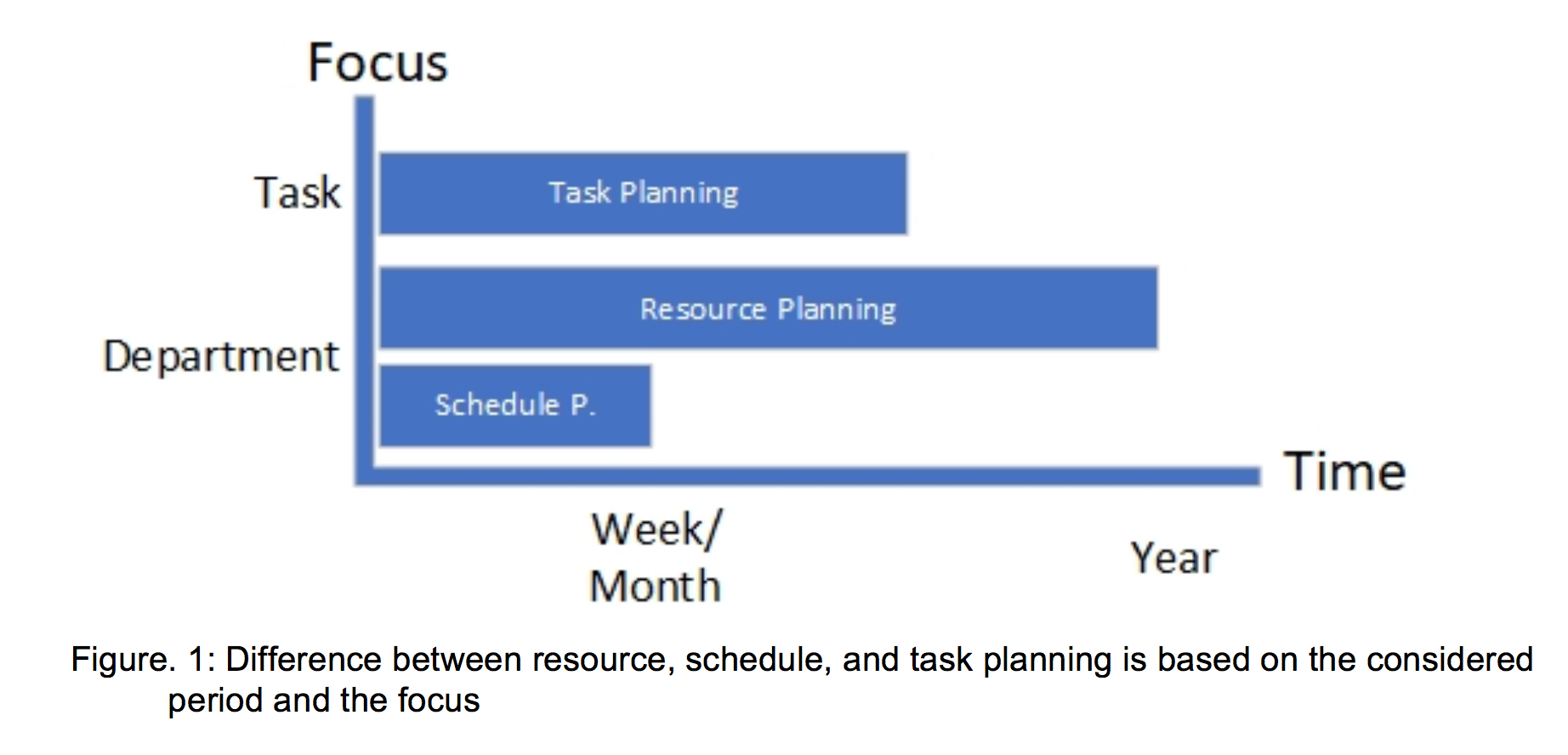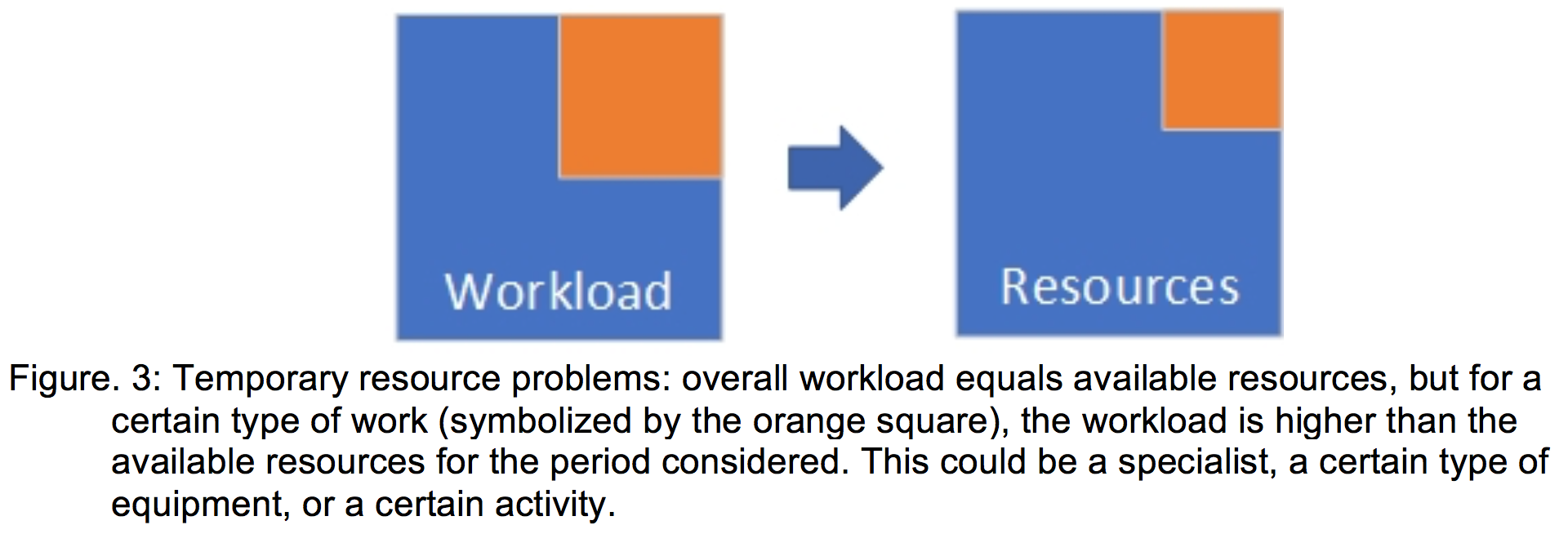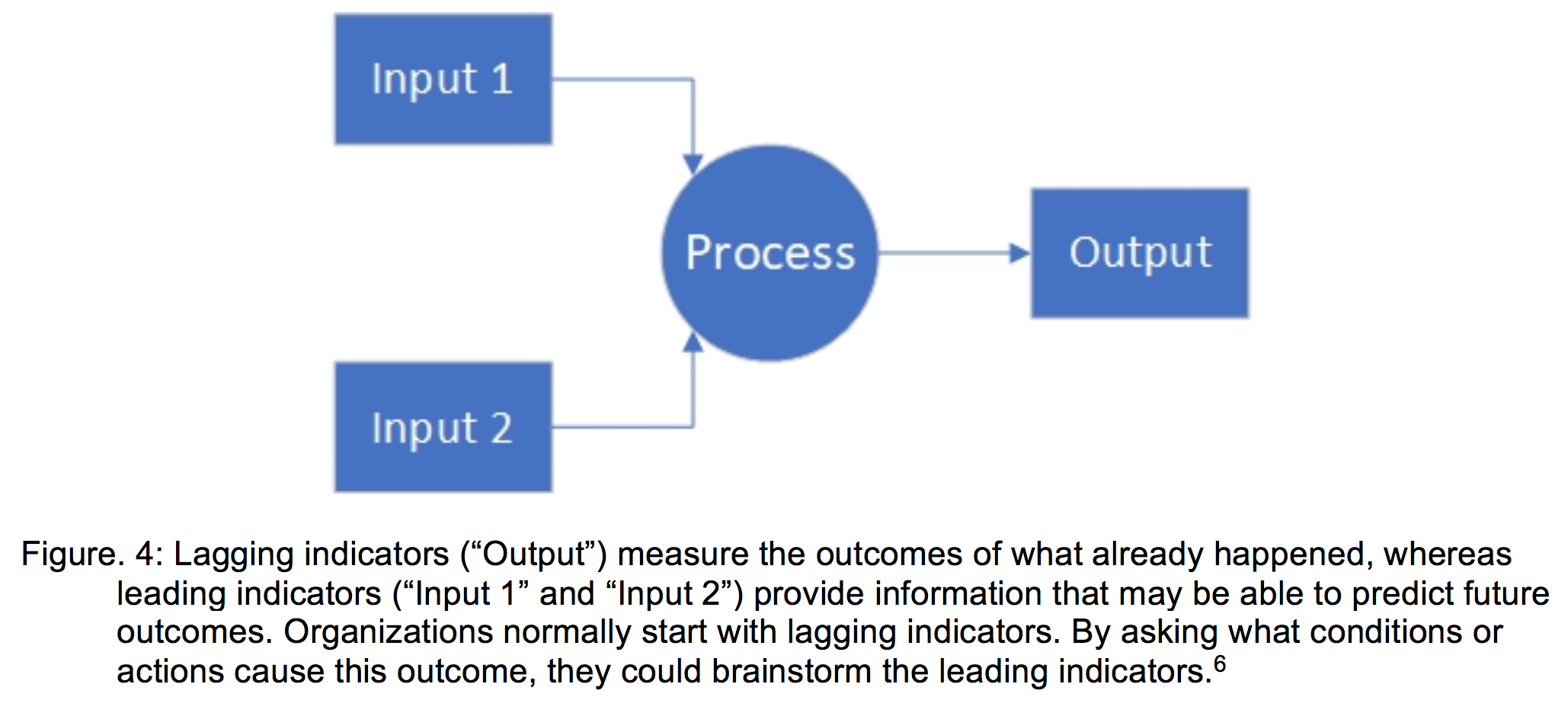Work Planning and Approaches to Overcome Bottlenecks – an analytical department in drug development
Common strategies to overcome bottlenecks and how fast they might lead to results are discussed.
Introduction
Each department, from production to clinical research, deals with three types of work: maintenance, routine, and project work. The work shares vary with the nature of the work, but all departments have to balance out the workload against the capacities. In this system, it comes to goal conflicts, when the workload exceeds the capacities for the considered period.
The aim of the article is to provide a resource planning and scheduling model, using the example of an analytical development department that includes the special characteristics of chemical analytical tasks in an R&D environment. Common strategies to overcome bottlenecks and how fast they might lead to results are discussed.
Planning of the analytical lab
Analytical chemistry is needed during all phases of developing a new drug product.1More than 50% of the CMC section of a dossier can be attributed to chemical analysis services, which include the development and validation of methods for raw materials and the drug product, the characterization of reference substances, the examination of container closure drug product interaction, and the development of stability indicating methods and execution of stability studies. However, analytical tasks are often on a critical path.2 Therefore, they gain a lot of attention, often combined with the desire to speed them up. This need is directly related to topics like resources, priorities, and all activities that might lead to faster results. At the core of those discussions is often a robust and defensible planning system that tries to solve goal conflicts by checking priorities and by allocating resources.3
Planning is a process needed to evaluate how many and what resources are needed to perform a job, considering the given time and priority. One of the biggest challenges in an analytical laboratory in an R&D environment is variable demand, resulting in an uneven workload combined with numerous tasks.3,4
These requirements demand different types of planning levels and scheduling to create a robust framework.

Resource planning
The available resources can be calculated as follows:

htotal = available hours per person per year
h = weekly working hours
ho = holidays
lho = legal holidays
do = average days off because of illness
Extra hours might be considered, depending on the company culture and work contracts.
The available resources are normally used for:
1.) development projects
2.) standard tasks
3.) maintenance
4.) special tasks or other unforeseen projects
The time used for development projects can be separated in straight analytical topics, for example method validation, or in topics where analytical service is needed from other development departments.
Standard tasks need to be planned for periodically recurring samples, like stability measurements. Those tasks are characterized by regularly scheduled samples and an even workload but mostly without flexibility. For example, a stability test must be performed in a short period of time after removal from the climate chambers.
The maintenance time is relative to the type of equipment and to the number of people. The time needed to do the requalification or calibration work is related to the number and type of analytical equipment. The time needed for training (practical, theoretical, external, internal, doing training, receiving training), SOP reading (technical, GMP), and administrative work (lab journal) is related to the number of people. This time requires, in most cases, an absolute number of hours, which is in percentages higher for part-time employees (leading to the fact that two part-time employees do not have the same output as one full time employee).
In conclusion:
- the more diverse the equipment
- the higher GMP requirements (as a result of the development phase) the higher the maintenance rate.
Special tasks could come to the R&D lab if the special expertise or the equipment of the R&D lab is needed, for example in cases of troubleshooting. Unforeseen tasks could come from projects if, for example, a health authority needs additional data or if experiments fail. The samples coming from these types of tasks are unplanned. For those tasks, a buffer time should be planned. This buffer allows to react on those incidences without completely rescheduling the whole planning.
The resource planning should be repeated at regular intervals based on the dynamics of the forecast. Yearly and quarterly or monthly could be typical intervals.
Schedule planning
The schedule planning has one macro point of view and one micro point of view.
The macro point of view considers that some tasks have to be executed in a certain order. For example, before you can validate a method, you must have a developed method, and the needed reference substance must be available. There are dependencies or typical sequences of activities that every lab has and that must be considered for the planning.
The micro point of planning affects the task. To perform a certain task, the following prerequisites must be in place:
- skilled analyst, which means: GMP trained, trained on the method and/ or equipment,
- available equipment, which means: qualified status, suitable for the requirements
The schedule planning is repeated on a daily or weekly basis based on the dynamics of the lab. Due to equipment shutdowns or illnesses, it is necessary to react on short notice.
Task planning
There are some metrics that are interesting in every lab. Those are:
- time needed to perform the analysis
- duration from the order to the final, approved result
- number of analyses performed in a given timeframe
Obviously, there is a difference between analysis time and the overall length of a task. If you break a task down to all the details, you realize that even one task could take up to 30 single steps, (e.g., plan creation, internal review, approval loop, review by QM, training of the plan, etc.)
Task planning deals mostly with synchronizing the different departments and people and their tasks on the interfaces. Planning should be initiated by a kickoff. Further meetings should take place depending on the number of interfaces.
The number of analyses in a certain timeframe is influenced by the following aspects:
- batching of tasks: can samples be collected and analyzed in a row?
- high frequency vs. low frequency tasks: are reagents in place; are forms created?
- How is the proficiency of the technician on the type of method?
Overcoming bottlenecks
Since the creation of analytical results or analytical methods is normally the last step of a task or a project, any delays get high attention. This attention normally correlates with the willingness to speed up the process. Dependent on where the bottleneck occurs, different approaches could solve the problem.
Overall resource problem
In case the resource planning shows that the workload is higher than the available resources (see Figure 1.), the following general options are possible:
1.) Increase resources
a. New staff from external
b. New staff from internal departments
c. Outsourcing of activities to external
d. Outsourcing of activities to internal departments
2.) Reduce workload
a. Prioritization
3.) Move resources
a. Value stream map

One of the first ideas to overcome resource problems is to hire new staff. While this is the most powerful option to increase resources long term, it should be carefully evaluated as a short-term option. The more complex the role of the staff is, the more training is needed until a person could help. In this time period, resources are taken from the available staff to train this person. The amount is reduced if you hire an experienced person, but time is still needed. One option that works on short hand is to remove the low brain work from the available staff and hire someone for this type of work (e.g., cleaning of glass ware).
The mentioned considerations also apply for new staff from other internal departments. However, the huge benefit here is that the overall training for software, systems, etc. is not required anymore.
The same problem applies for outsourcing. The outsourcing of any activities requires further activities. Depending on the project stage, method transfer activities are needed. Furthermore, an external lab needs an internal counterpart for questions. The time needed for the handling of the external laboratory should always be included in the calculation.
The mentioned considerations also apply for moving tasks to other internal departments that require ongoing support.
The next option is to reduce the workload by a clear prioritization of the work. While this point sounds simplistic, in reality, there are some hurdles. The first hurdle is that the lab needs transparency about all tasks and the estimated hours to fulfil those tasks. This includes the internal tasks for maintenance. The next hurdle is that a lab normally has different internal customers with their own priorities. Creating an overall priority list is normally not possible, because a prerequisite would be that all internal customers are aligned. To solve this issue, the best option is to allocate different resources for the different customers, (e.g., 20% for QC, 20% Life Cycle Projects, 60% R&D Projects). Within each section, it is much easier to set priorities from A-Z.
Another option that is quite normal in production departments, but less common in R&D departments, is to create a value stream along a standard development project. According to a short benchmark study, the common ratio of formulation development to analytical development is 1:2, excluding any activities for life cycle management and direct support of the QC and production department but including the management of external resources for special analytics. If the stability studies are outsourced at an early stage, a ratio of 1:1,5 could be sufficient, but it should be not less. However, if the ratio between the development departments is not harmonized, there will be always one department waiting for the other.
Temporary resource problem
In the case that bottlenecks occur during the schedule planning (see Figure. 2), the following options are possible:
1.) Equipment related
a. New or better equipment
2.) Staff related
a. Cross Qualification
b. Leaner Qualification/ Training
c. Moving Maintenance
3.) Planning related
a. Lowering the number of unmovable tasks
b. Installing KPI

If there are bottlenecks due to limited analytical resources, new equipment or improvement of the current equipment would solve this issue. New equipment leads to qualification efforts, which might include training of the technician in short term and higher maintenance level in long term. However, if there is a long-term demand for new equipment, due to a new product class or the introduction in the pharmacopoeia, this step could solve this issue.
Sometimes, there is a resource problem for a special analytical method or an analytical instrument, because not enough staff is trained for this method or instrument. To overcome these training limitations, it is self-evident to cross-qualify all staff members of a laboratory. The ideal lab technician is one who is capable of performing all sample preparation steps and who is skilled to use all analytical instruments. In reality, however, this is limited by the following two points:
- a lab technician, who is focused only on a limited number of analyses, is familiar with a method or an instrument, which results in an increased speed and higher output
- a lab technician, who is trained on a new method or a new equipment, needs to use his skills at least every three months to maintain this newly acquired skill. This must be considered if there is a decision to train an additional technician for seldom used analytical techniques.
A leaner qualification or training program is something that should be discussed with the training department. An aspect is that most training departments are located in quality departments. Accordingly, the training programs are focused on showing GMP compliance to the auditor. The training programs are often not designed to minimize the on-boarding time.
Moving maintenance activities for equipment lead to a blocked equipment status. But, in case a certain equipment is not needed in a given timeframe, this approach would transfer working hours from the timeframe into the current timeframe (dependent on the requalification frequency).
Another aspect that limits the flexibility of the analytical laboratory is the percentage of unmovable tasks. Unmovable tasks are usually:
- execution of stability studies
- support of investigations during a deviation
- support of the QC department with analysis needed for the batch release
- development tasks due to deficiency letters with strict timelines (e.g., clock stop)
Having a high number of unmovable tasks lowers the flexibility to react on unforeseen tasks coming from deviations or other unplanned activities. The higher the percentage of already blocked hours, the higher the impact that unforeseen activities have. This could be anticipated by blocking a certain percentage (e.g., 10%) for unplanned activities.
There are two types of KPI, leading and lagging KPIs (see Figure 3.). While the lagging KPIs are normally of interest to the internal customers, it is recommended that the analytical lab also tracks leading KPIs that have an influence on the lagging KPIs. Recommended is a KPI like “hours for unplanned tasks, requested in the last month.” This KPI forces everyone to think about priorities. Assuming that an unforeseen task could be analyzed along the way, without having an impact on the other work packages, is an illusion.

Task related problems
These problems normally show up as unwanted waiting time. The following options are possible to overcome those bottlenecks:
1.) Installation of a task (project-) owner in the analytical lab
A standard analytical task, for example a method validation, could consist of several small steps, as mentioned earlier. In case several persons are involved, and time is critical, it is recommended to install a task owner, who is the single point of contact for all persons to report delays and synchronize all activities.
Conclusion
Finding the right balance between planning and over-planning is often a difficult extremum problem. On one hand, it is an illusion that 100% robust planning can be achieved in a non-linear and highly dynamic system like an analytical development department.
On the other hand, the number of different tasks and their dependence on each other is so complex that planning is needed to avoid waiting time. The other important aspect of planning is that it generates a transparency that is highly needed when it comes to justification of resources and overcoming goal conflicts.
In conclusion, planning of the analytical laboratory remains one of the most complex tasks in resource planning, but the consideration of the aforementioned steps could help to identify approaches to overcome bottlenecks.
References
1. Lee R and Goldman L: The Central Role Of Analytic Method Development And Validation In Pharmaceutical Development. https://www.particlesciences.com/docs/analytic_method_development_in_pharmaceutical.pdf
2. Bernstein J (2013): CMC Development Strategies for Small Pharma https://www.pharmoutsourcing.com/Featured-Articles/133695-CMC-Development-Strategies-for-Small-Pharma/
3. Gorges J and Grund A (2017): Aiming at a Moving Target: Theoretical and Methodological Considerations in the Study of Intraindividual Goal Conflict between Personal Goals. Front. Psychol. 8:2011.doi: 10.3389/fpsyg.2017.02011
4. May M (2014): Leaning the Quality Control Laboratory https://www.pharmamanufacturing.com/articles/2014/leaning-the-quality-control-laboratory/
5. Costigliola A (2016): Simulation Model of Quality Control Laboratory in Pharmaceutical Industry https://fenix.tecnico.ulisboa.pt/downloadFile/1689244997256756/ExtendedAbstract%20-%20Andrea%20Costigliola(82587).pdf
6. Janczak, R. (2012): Meaningful Performance Metrics for Compliance in M. R. Saghee (Ed.), (pp. 459 – 478) Achieving Quality and Compliance Excellence in Pharmaceuticals, Business Horizon
Christian Rack, QP IMP/ QA / Hospital Care B. Braun Melsungen AG
Navigating Distrust: Pharma in the Age of Social Media
February 18th 2025Ian Baer, Founder and CEO of Sooth, discusses how the growing distrust in social media will impact industry marketing strategies and the relationships between pharmaceutical companies and the patients they aim to serve. He also explains dark social, how to combat misinformation, closing the trust gap, and more.
The Misinformation Maze: Navigating Public Health in the Digital Age
March 11th 2025Jennifer Butler, chief commercial officer of Pleio, discusses misinformation's threat to public health, where patients are turning for trustworthy health information, the industry's pivot to peer-to-patient strategies to educate patients, and more.